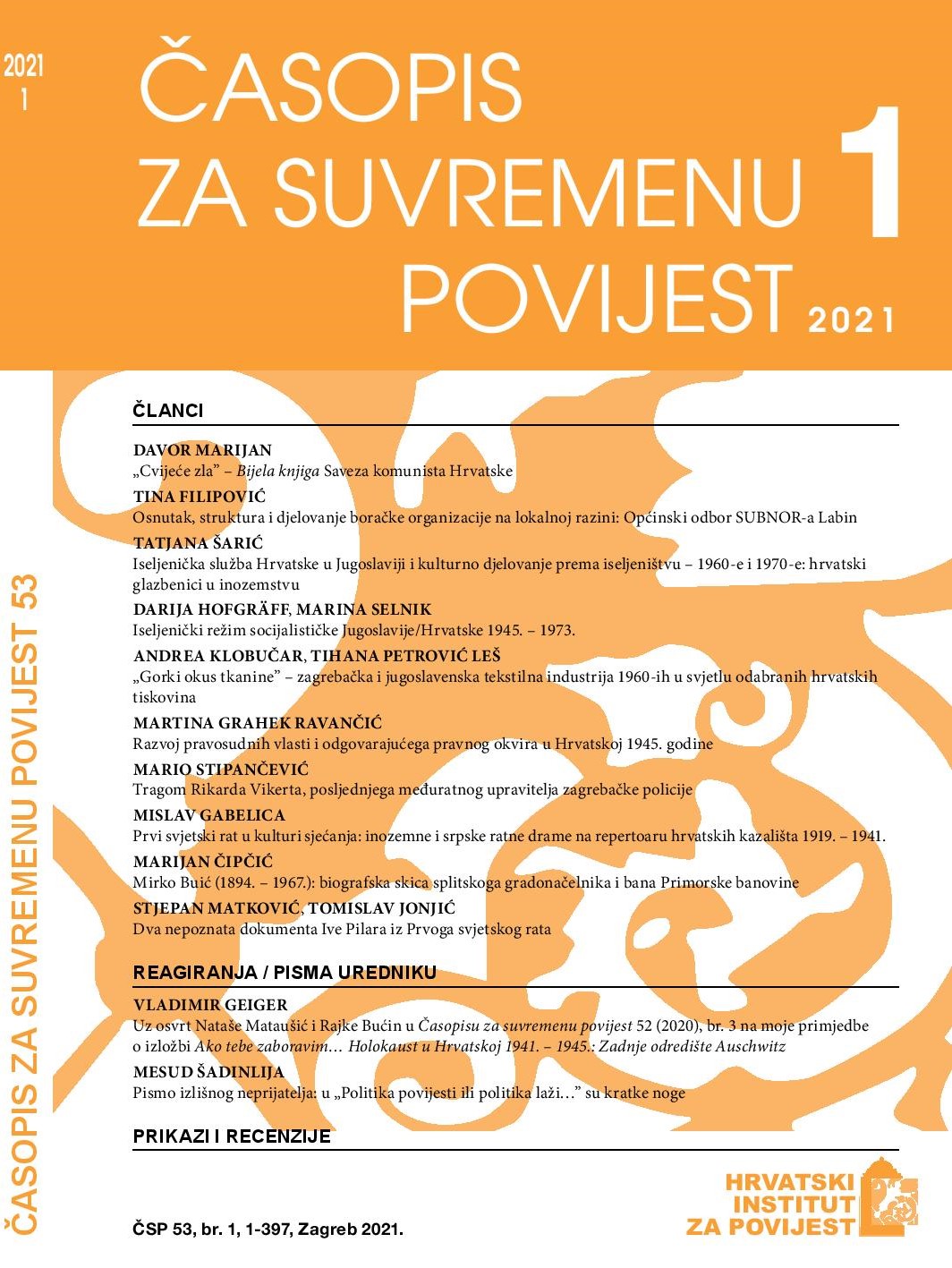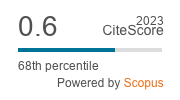‘The Bitter Taste of Fabric’: The Zagreb and Yugoslav Textile Industry of the 1960s in Light of Selected Croatian Printed Media
DOI:
https://doi.org/10.22586/csp.v53i1.11890Keywords:
textile industry; Yugoslavia; Zagreb; printed media; economic history; 1960sAbstract
In this paper, the authors examine the yard goods industry in Zagreb in the 1960s, in the context of the Yugoslav textile industry. Due to the complexity of the textile industry as a topic, the paper examines a longer period, from the late 1950s to the early 1970s, as it has been accepted in historiography.
Using an analytical-interpretative method, qualitative and quantitative results have been obtained from newspapers and journals from 1959 to 1972. A chronological overview of the studied periodicals has shown more clearly the impressions of the political and economic events on the development and business of the textile industry. The influences of the so-called ‘small reforms’ of 1961, the economic reform of 1965, and the events of 1968 and the subsequent liberalisation process are noticeable. The difference between the first and second half of the 1960s is particularly prominent. The first half was characterised by the production of heavy woollen fabrics for making women’s and men’s tops, particularly coats. The textile industry was slow to adapt to the market through its reorganisations, i.e. attempts to merge, change product ranges, and switch from heavy to light, artificial fabrics. Simultaneously, there was a reorientation towards foreign markets, which had numerous problems related to the import of poor raw materials and finished fabrics as well as exports aimed at keeping labour costs low. Other significant problems were bonification and the trading of imported textiles on the black market. In the second half of the decade, following international trends, the focus was on producing textiles from artificial fabrics, which were easier to maintain, cheaper, and expressed new social trends, especially making the lives of employed women easier.
In the 1965–1971 period, stronger demands to transition to a market-based business model are evident in the yard goods industry, but a strong influence of the state is also visible in various aspects: firstly, through ideology, as there was an effort to achieve full employment, develop industry and cities, which led to overemployment and employment that was not in line with the needs of the market; secondly, through direct interference in business activities via legislations, such as the regulations on compulsory export; thirdly, through the Yugoslav international policy of non-alignment, but maintaining simultaneous economic links with the West, which led to unequal relationships (forced import of large quantities of goods, much of them of poor quality, and cheap exports). Insufficient investment in modernisation, which was the result of income being diverted to salaries, led to a lack of competitiveness on the new consumer market. This paper concludes that, despite all modernisation and liberalisation processes, obsolete technology, an unqualified female workforce, and the lowest income among all industries were permanent problems of the yard goods industry from 1959 to 1971.
Downloads
Published
How to Cite
Issue
Section
License
Copyright (c) 2021 authors and journal

This work is licensed under a Creative Commons Attribution-NonCommercial 4.0 International License.
Copyright holders are the publisher Croatian Institute of History and the authors. Journal of Contemporary History is an Open Access journal. Users are allowed to read, download, copy, redistribute, print, search and link to material, and alter, transform, or build upon the material, or use them for any other lawful purpose as long as they attribute the source in an appropriate manner according to the Creative Commons licence CC BY-NC. The papers published in Journal of Contemporary History can be deposited and self-archived in the institutional and thematic repositories providing the link to the journal's web pages and HRČAK. Journal does not charge article processing charges (APC). The editors assume no responsibility for statements of fact or opinion made by contributors.




